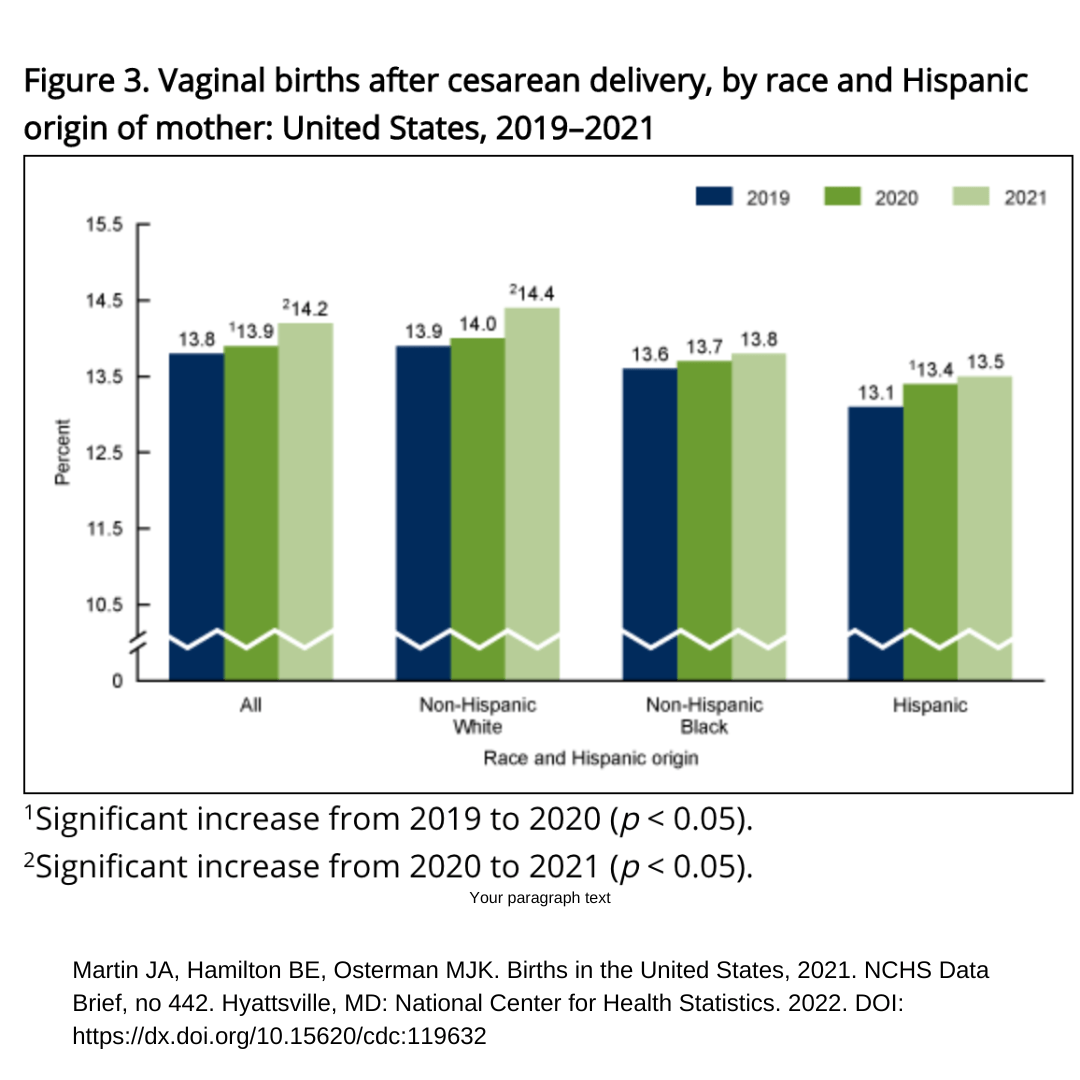
The Centers for Disease Control and Prevention (CDC) collects and reports on vaginal birth after cesarean (VBAC) rates along with other statistics from birth certificate data every year. Astonishingly they really didn’t start reporting this specific data point until 2016. (It may be a coincidence, but it was just after the publication of the Safe Prevention of the Primary Cesarean, which, while it did not talk about VBAC directly, would impact the rate.)
In fact, the VBAC rate used to be much higher in the early 1990s and hit a sharp bottom in 2010. “The overall VBAC rate in the United States (US) declined sharply from 24 % in 1996 to 8 % in 2010, contrary to the Healthy People 2010 national target of 37 % (objective no. 16-9b). “
The VBAC success rate can be as high as 95% (for people with a previous vaginal birth) and as low as 40% (for people with pregnancy/labor complications). The most common number to hear cited is usually 72-75% success rate. (RCOG)
It’s difficult to square that with the fact that in 2021 the VBAC success rate in the United States was 14.2%. And that’s a great number for where we’ve been. As an estimate, it’s about 170,000 VBACs total and a difference of about 3300 MORE VBACs than if we stayed at the same rate as the previous year. The downstream effects of more VBACs aren’t usually quantified, but consider the fewer NICU admissions, the fewer additional cesareans, the fewer placenta previas or accretas. This is a significant impact on families.
And as you can see from the chart, the VBAC rate in 2016 was 12.4%. This is a very big boat to turn around and it’s going to happen slowly. With the recommendations from the Safe Prevention article above, the goal was to bring the cesarean numbers down. We know that this is not happening and the cesarean rate went up. If you look individually at the recommendations like an increase in forceps/vacuums, you can see that did not happen. Forceps rate has stayed steady at about 0.05% of births since 2016 and vacuum has gone from 2.6 to 2.5% in that same timeline.
So, as a doula, what do you need to know about VBAC?
- It is possible for most people to have a successful VBAC.
- It may be less likely to happen if there are certain complications.
- The choice of provider and how receptive that provider is to VBAC matters.
- Your client may be asked to sign paperwork about the risks and benefits, usually, the emphasis is on the risks.
- Find local resources for support during pregnancy and pre-pregnancy, like ICAN or other groups. (These may be online if you don’t have any local to you.)
- Stay up-to-date on VBAC and birth statistics in general. Great social media to talk about rates and inform the general public.
What do you do to stay up-to-date on VBAC information? We’re sharing our ideas!
